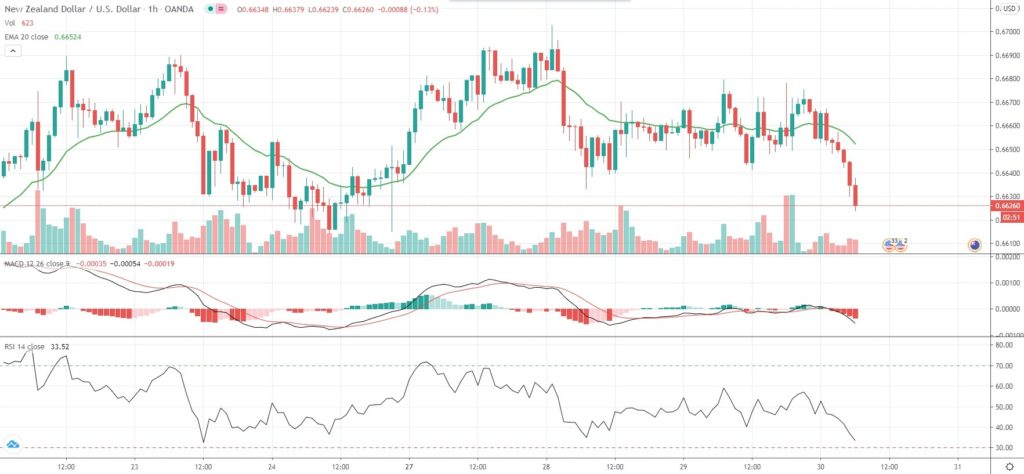NZD/USD eased from recent seven-month highs on Thursday, as the US Dollar bounced from two-year lows against peers it had earlier registered following the Federal Reserve’s dovish stance on policy.
The US central bank kept the target range for the federal funds rate intact at 0%-0.25% at its policy meeting concluded yesterday, in line with market expectations, and reiterated its commitment to use the entire range of policy tools in support of the economy.
The Fed also indicated that borrowing costs would remain close to zero for as long as necessary, so that the economy could weather the negative effects from the COVID-19 pandemic and is again on track to achieve the bank’s maximum employment and price stability objectives.
The central bank warned that economic activity and employment in the country still remained “well below their levels at the beginning of the year,” as the US faces a continuing increase in new coronavirus infections, while US death cases already account for nearly a quarter of the world’s total.
“It is definitely a bit more cautious and dovish, and basically tells the market they’re not going to raise interest rates any time soon,” Kathy Lien, managing director at BK Asset Management, said.
“In an environment where the market is dumping dollars, it’s another excuse to drive it lower.”
The US Dollar has faced selling pressure on speculation that the Federal Reserve may allow inflation to run higher than it has indicated before hiking rates.
Meanwhile, in New Zealand, a gauge of business confidence was reported to have shown improvement in July from a month ago amid relaxation of coronavirus-related restrictive measures.
As of 6:49 GMT on Thursday NZD/USD was retreating 0.63% to trade at 0.6627, after earlier touching an intraday low of 0.6626, or a level not seen since July 27th (0.6615). On Tuesday it climbed as high as 0.6703, or its strongest level since January 3rd. The major pair has dipped 0.25% so far this week, following a 1.32% advance in the prior week – its best performance since the business week ended on July 3rd.
In terms of economic calendar, today market players will be paying attention to the preliminary US GDP data for Q2 at 12:30 GMT. It may show that economy contracted at an annualized rate of 34.1% during the second quarter, according to market consensus. In Q1, US GDP decreased 5%, according to final data, or at the steepest annual rate since Q4 2008.
Also at 12:30 GMT the US Labor Department will report on jobless claims. The number of people in the country, who filed for unemployment assistance for the first time during the business week ended July 24th, probably rose to 1,450,000, according to expectations, from 1,416,000 in the preceding week.
Data for the week ended July 17th brought the total number of claims reported since March 21st to 52.7 million.
Bond Yield Spread
The spread between 1-year New Zealand and 1-year US bond yields, which reflects the flow of funds in a short term, equaled 12.7 basis points (0.127%) as of 6:15 GMT on Thursday, or unchanged compared to July 29th.
Daily Pivot Levels (traditional method of calculation)
Central Pivot – 0.6663
R1 – 0.6685
R2 – 0.6701
R3 – 0.6723
R4 – 0.6745
S1 – 0.6647
S2 – 0.6625
S3 – 0.6609
S4 – 0.6593






